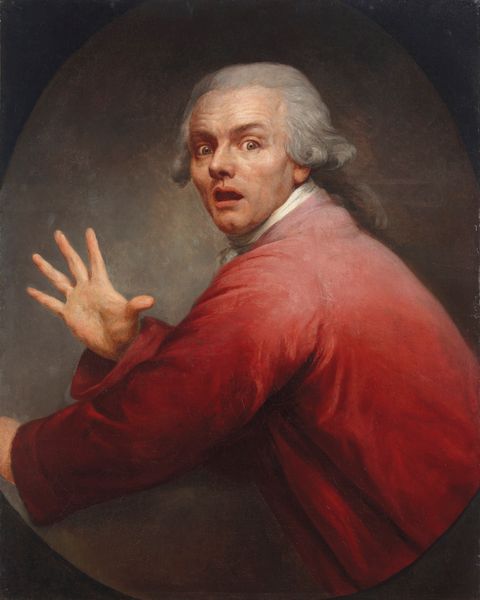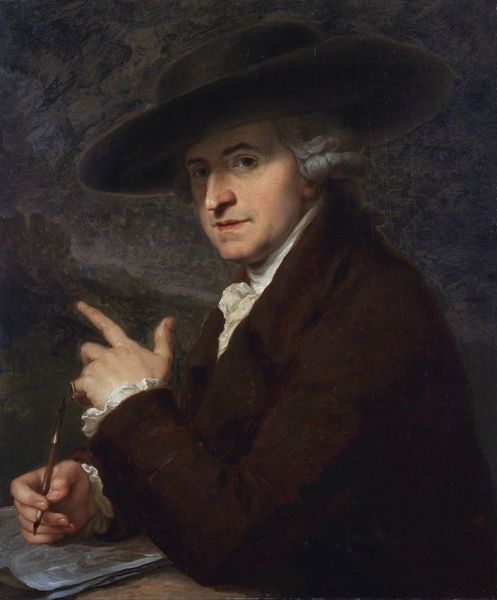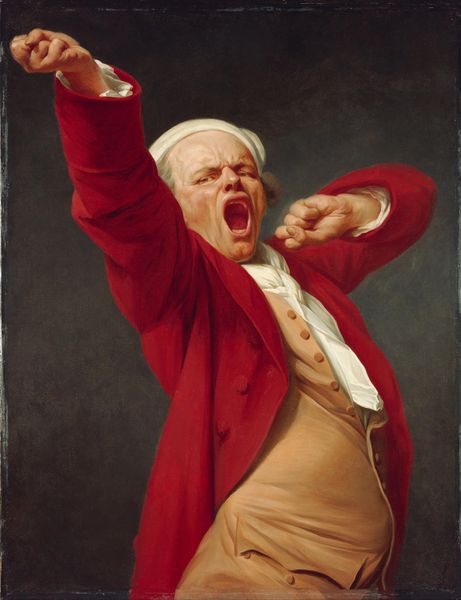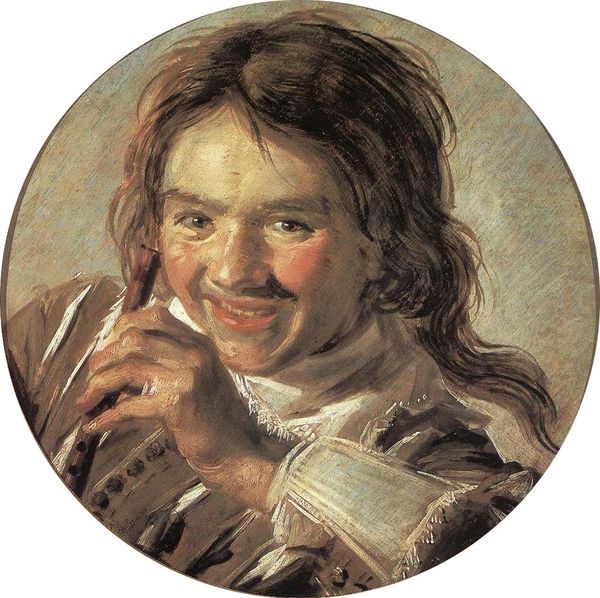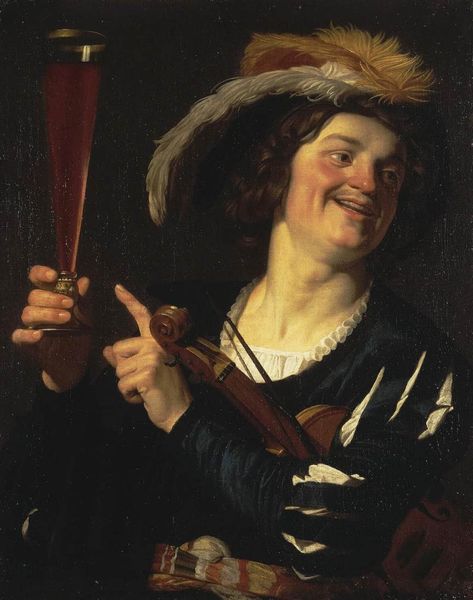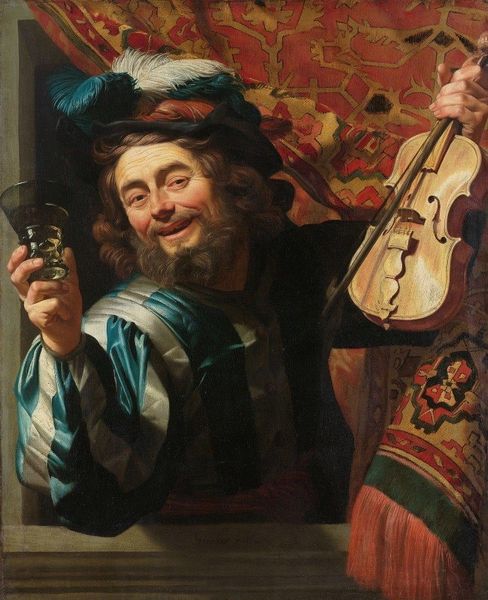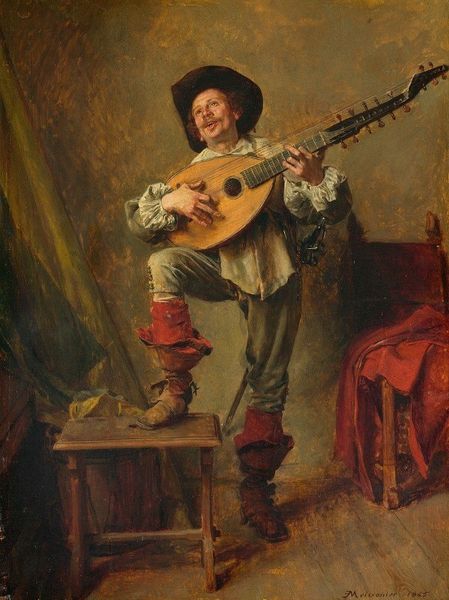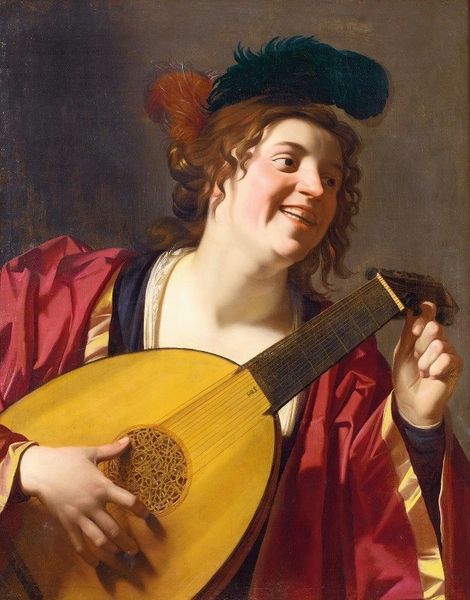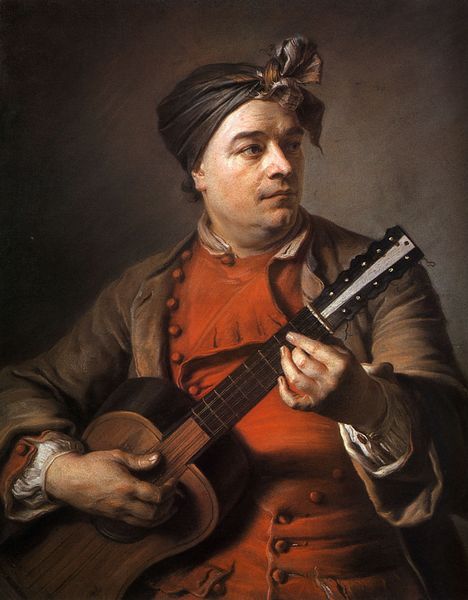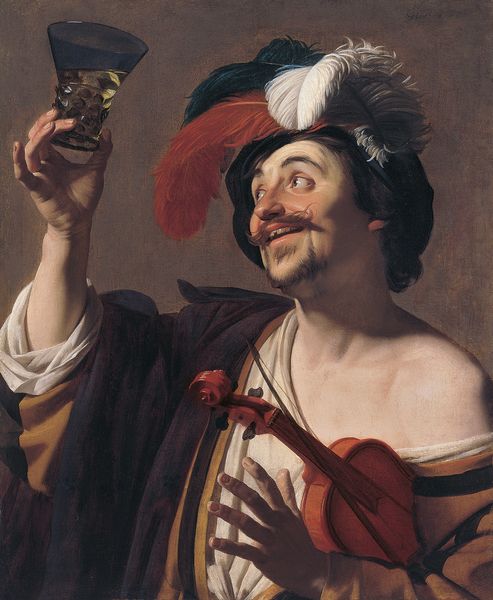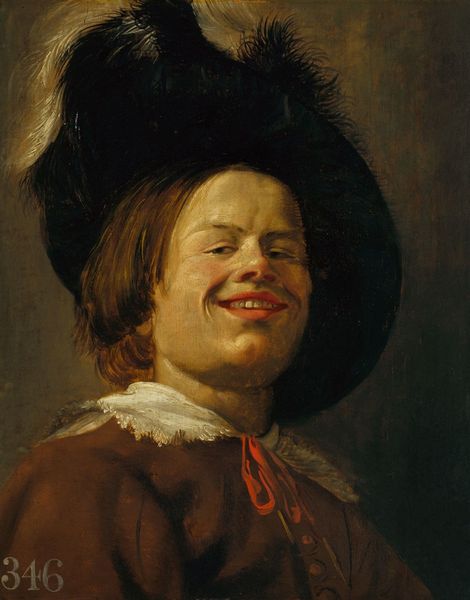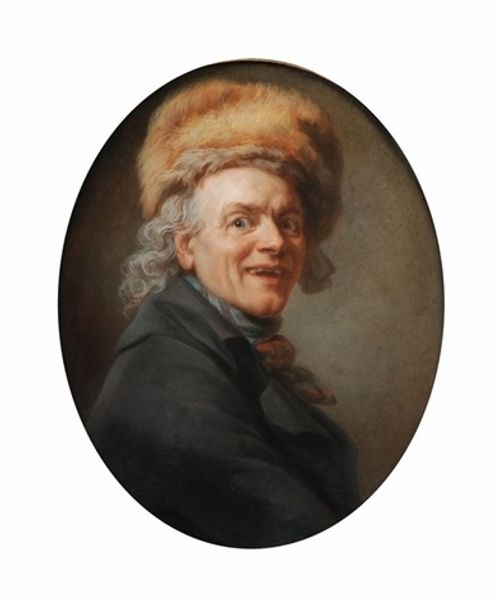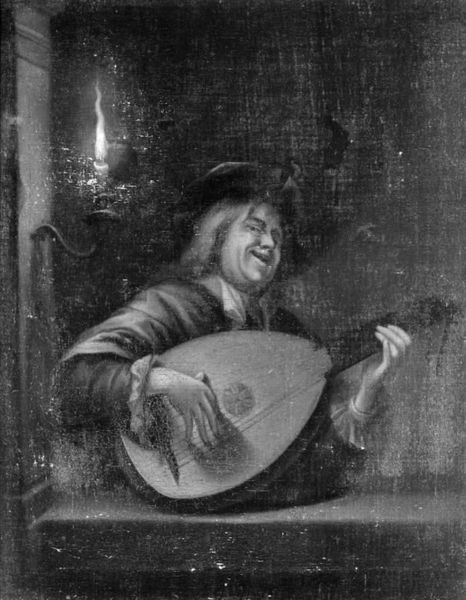
painting, oil-paint
portrait
self-portrait
portrait
painting
oil-paint
romanticism
Editor: This is Joseph Ducreux's "Self Portrait," painted in 1793 using oil paint. It's surprisingly… cheeky, almost meme-worthy in its expression. What strikes you about this self-representation? Curator: Ah, Ducreux! Observe how he disrupts the stoic tradition of portraiture. The pointed finger, the sly grin...these aren't accidents. Consider the context: revolution is in the air. How does this challenge the viewer's expectations of status and self-importance? It echoes throughout culture later. Editor: So, the flamboyance wasn't just a personal quirk? It's a sign of the times? Curator: Exactly! Consider the psychological weight of such an image. What does it tell us about the artist's awareness of self, but also how one views societal expectations. He almost seems to mock the established norms, pointing directly at both himself and us. Editor: The direct address definitely breaks down the barrier between the artist and the viewer. Curator: Indeed. It’s not just about capturing a likeness. What I love here is that it explores identity as performance, something later seen as "attitude," but then likely viewed through a much different cultural lense. Think of the emotional continuity here. It foreshadows something…rebellious. Don't you agree? Editor: That makes the artwork much more compelling to me. I see how Ducreux uses self-portraiture not just for visibility, but to provoke a reaction from society. Curator: Precisely. The image is an attitude! What do you now suppose it tells us of ourselves? Editor: It pushes the boundaries of something between formal and relaxed expression, like a silent joke throughout art history.
Comments
No comments
Be the first to comment and join the conversation on the ultimate creative platform.
